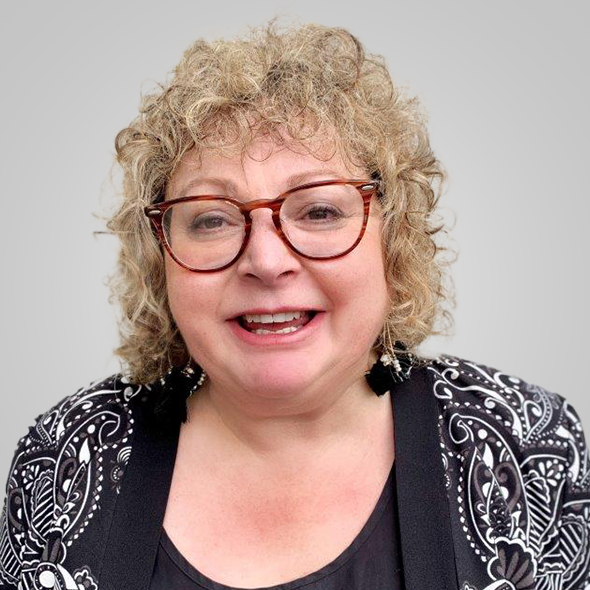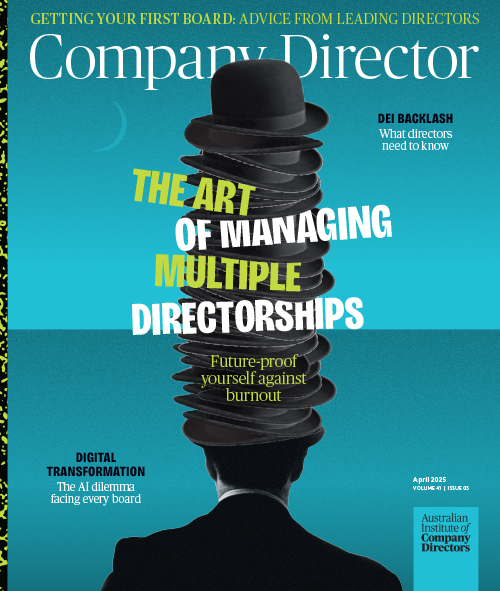Recent changes to occupational health and safety regulations address the important issue of mental wellbeing in the workplace.
Preventing psychological harm is an essential part of creating a healthy and safe workplace, thanks to changes to the work health and safety (WHS) regulations. The model WHS laws now include regulations on psychosocial hazards. The changes, made in April 2022, were recommended by the 2018 review of the model WHS laws conducted by Marie Boland, now the CEO of Safe Work Australia.
Boland explains that the new regulations have the same obligations for directors as those regarding physical risks. She notes that WHS laws have always defined health as both physical and psychological, and that directors have long had due diligence obligations, which include keeping current with various WHS regulation changes.
“But now there’s a greater emphasis on keeping up to date with WHS measures as they relate to psychological health,” she says. “Directors need to understand the nature of their businesses and the physical and psychological health risks that are associated with these businesses. They also need to ensure that WHS risk management systems are in place and appropriate resources are available to deal with the hazards. The objective is to identify the hazards and risks before workers are exposed to them. This comes back to consultation, talking to staff and observing how they work and behave.”
Steve Bell, managing partner of employment, industrial relations and safety (Australia, Asia) at Herbert Smith Freehills, notes that boards now need to understand how work — or the interactions of work — can be mentally harmful.
“The directors’ role, in my view, is one of governance,” says Bell. “Directors must be satisfied that there is a plan of action to assess and control the risks.”
He says there are various ways directors can assess how well their organisations are tracking in this regard. For example, whether there’s a psychosocial risk register and evidence that the risks are being reduced.
Bell also believes that boards should set the tone from the top. “Directors should be satisfied that they’re creating a psychologically safe environment for their deliberations and are treating each other and management with respect and courtesy.”
Understanding psychosocial hazards
Dr Narelle Beer MAICD, WorkSafe Victoria executive director of health and safety, says psychosocial hazards involve anything in the management or design of work that increases the risk of workplace mental injury. This can include things like bullying, workplace violence and aggression, sexual harassment, trauma, high job demands and fatigue.
Paul Flanagan, CEO and founder of EAP (employee assistance program) provider Life Street, says some roles and industries are more prone to psychosocial risks. For example, emergency responders and employees dealing with angry or distressed customers, or those working in isolation without much support, may be more susceptible.
Identifying psychosocial risks
Flanagan says one red flag in large organisations is a high volume of workers’ compensation claims related to psychological issues. “But from an individual’s point of view, a workers’ compensation claim is often the last resort. It’s like an escape hatch when they can’t cope anymore.”
He says directors can identify psychosocial risks by scrutinising turnover and absenteeism figures, exit surveys, culture reviews and signs of disengagement in employee survey data. Further indications include employees complaining about being stressed or burnt out.
Costs to the business
In addition to having a detrimental impact on individual workers, Beer says work-related psychological injuries have consequences for workplaces more broadly.
“Reduced participation and productivity caused by poor psychological health carries an economic cost,” she says. “It also contributes to high staff turnover, reduced productivity, increased sick leave and an increase in workers’ compensation claims and time off work.”
Beer adds that duty holders who turn a blind eye to psychological health hazards run the risk of exposing themselves to the potential for prosecution and hefty fines.
Boland notes that, on average, work-related psychological injuries have longer recovery times, higher costs and require more time away from work when compared with physical injuries.
In 2020–21, according to the Safe Work Australia report Psychological health and safety in the workplace, the median compensation paid for mental health conditions was $58,615 per serious claim compared to $15,743 per serious claim for all injuries and diseases. Over the same period, the median time lost for mental health conditions was 34.2 working weeks per serious claim compared to eight working weeks per serious claim for all injuries and diseases.
The incidences of work-related psychological claims have also been rising, but the destigmatisation and increased awareness of mental health conditions may have contributed to this rise.
Addressing the risks
Flanagan says the regulatory changes involve a big shift. “If you look after people holistically, you don’t just see them as production units, you see them as people,” he says. “It’s not just about how they are performing, but about how they are feeling.”
Here, Flanagan believes it becomes part of the role of managers and team leaders to make careful, non-intrusive and sensitive inquiries about how their teams are doing.
Bell says organisations must consider whether employees have clarity about their roles, whether they have the right resources to perform their roles and the nature of their relationships with supervisors or managers. They will also have to look at work design.
According to Beer, good work design involves consulting with workers on issues that affect their mental health at work. It includes designing jobs with safe workloads and providing workers with appropriate control and flexibility over their work. It also requires implementing policies and procedures for responding to issues such as workplace bullying and occupational violence and aggression.
Bell says organisations that are adapting well to the changes are making assessments in cohorts of workers who are likely to have a common experience at work.
“If you prepare a whole enterprise psychosocial risk register for a large business, it’s going to be so high-level as to not give directors any real guidance,” he says. “Equally, we can’t go around having a risk assessment for every individual in the organisation. We have to find a middle ground. My clients are breaking it up into four or five meaningful cohorts, doing their risk assessments and then reporting on what the action plan is to mitigate those risks for each cohort.”
However, Flanagan cautions that while organisations can provide the best work environment, there may still be vulnerable employees who fall through the cracks. “You could have 30 people in a particular role and one of them may not be able to cope with some aspect of the role,” he says. “The organisation must try to identify them and help them early. The right type of employee assistance program can work with an organisation to retain the individual and help them cope better.”
Various tools are available to help organisations through the WHS changes. Boland says a good starting point is the model WHS Regulations and Codes of Practice, available on the Safe Work Australia website.
“The Managing psychosocial hazards at work code takes a principles-based approach, but sets out the whole process for people to work through to determine how to manage the risks,” she says.
This article first appeared under the headline 'Psychological Welfare’ in the June 2024 issue of Company Director magazine.
Latest news
Already a member?
Login to view this content



